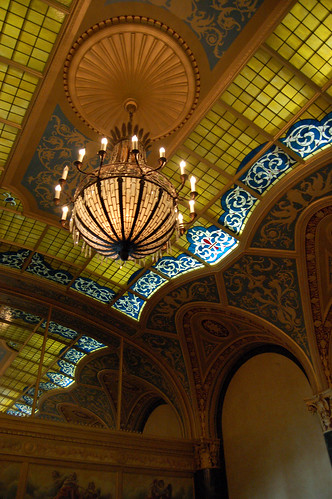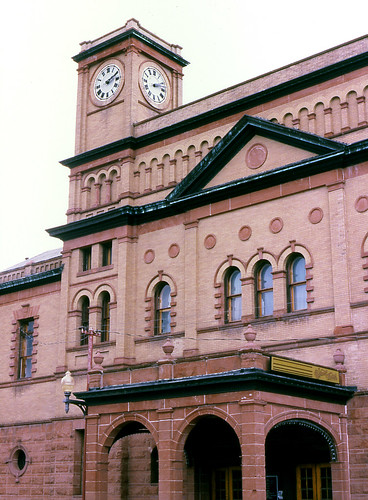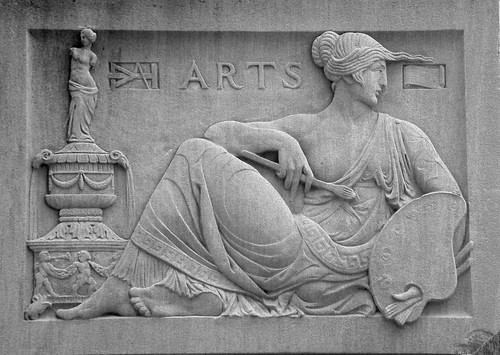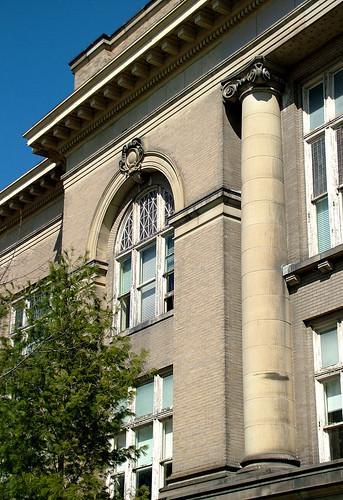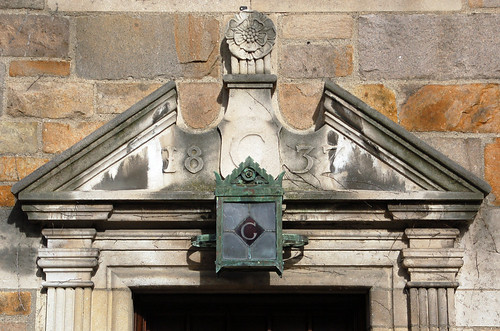
The Luther L. Wright High School, built in 1924.

The high school has some fantastic exterior details surrounding its front door and windows! Of course, my friends thought I was an über-geek, photographing the building, but... Really, if my high school had looked this awesome, it would have made the experience that much better.

A detail on the terra cotta embellishments that surround the school's main entrance.
Now, moving on to Ironwood's beautiful main-street cinema:

Here's the Ironwood Theatre, the last on my list of historic movie theaters to photograph! It was well worth the wait, the 3.5-hour drive, and the pouring rain along the way. I couldn't get inside the theater, unfortunately, but I hear it carries a classical theme with murals that depict gryphons and other mythical creatures.
According to WaterWinterWonderland.com, the Ironwood Theatre was built in 1928, designed as a silent movie and vaudeville palace. The architect was Albert Nelson, and the cost of the building was $160,000.

Gryphons atop a side door on the Ironwood Theatre.

Gryphons adorn the theater's marquee, as well.

Lastly, the Ironwood Theatre's marquee, lit up for a night performance! It was wonderful to see the neon and the light bulbs flashing.




